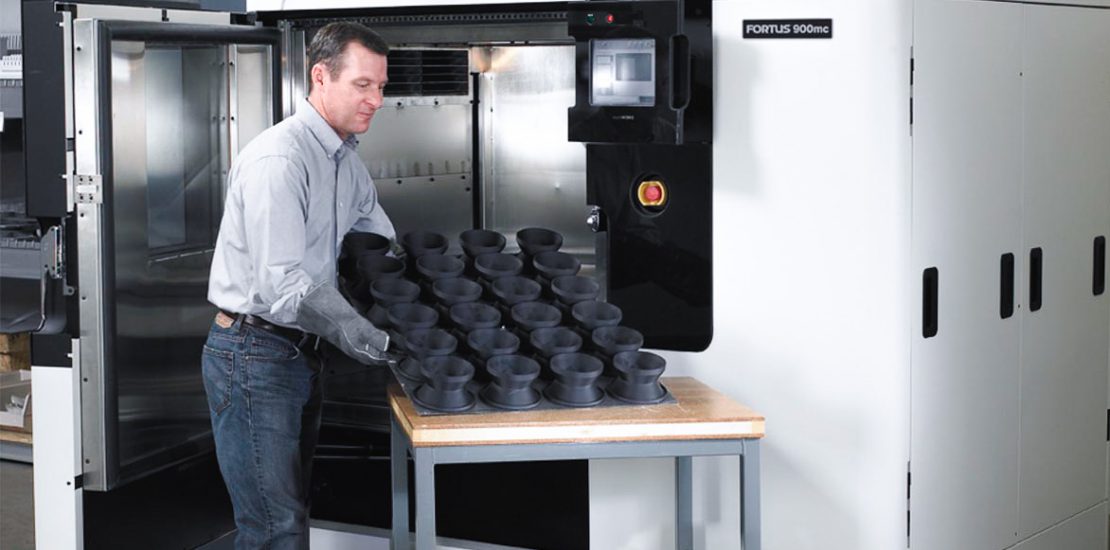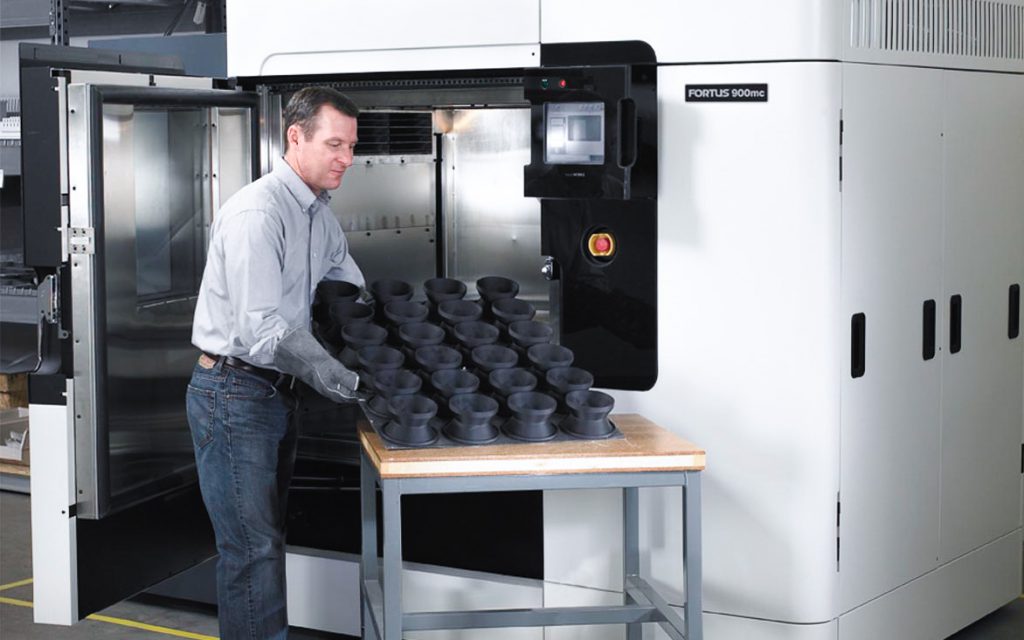- September 9, 2020
- Posted by: David Marshall
- Category: Digital Transformation, Innovation

It doesn’t matter how well you plan, all it takes is one bad inventory count or runaway forklift for a customer to have a rush order for a small number of parts, say 250 brackets. It’s something you don’t make that often and you have to retool and set up for that order which makes you wonder whether it’s worth it for small batch sizes.
But the economy isn’t going that well and you need the cash flow, so you do the setup and run the order, and the customer is happy. But was there a way to make all this easier for you? What could you have done to make it a more appealing and profitable order and not be such a headache?
For starters, this is where 3D printing, also called additive manufacturing, and digital manufacturing can bail you out.
 It’s amazing how much 3D printing has provided the world, both big and small, although it’s more for the small parts than the huge parts. It’s great for whenever someone needs something that they positively, absolutely have to have within a very short amount of time and your conventional supply chain will take weeks or months.
It’s amazing how much 3D printing has provided the world, both big and small, although it’s more for the small parts than the huge parts. It’s great for whenever someone needs something that they positively, absolutely have to have within a very short amount of time and your conventional supply chain will take weeks or months.
If you needed 250 wall brackets and you typically order 10,000 brackets from China with a 3-month lead time, you’re going to have a real problem. This is one reason why it makes sense to work with local suppliers and manufacturers whenever possible and to even bring as much of your operation back into your own facility whenever possible just to manage these small batch sizes.
For those OEMs that normally need a lot of small parts at irregular intervals, I would recommend setting up your own 3D printing operation, especially if you don’t have a large parts catalog. But if you do have one, you may want to form a relationship with several industrial 3D printers or even invest in a company to handle all the 3D printing for you.
What Should You Do if You’re the Manufacturer?
If you’re the company that makes brackets, and your typical order is 10,000 units, what do you do if someone only wants 250 or 500? Should you take that order or turn it down because it’s too small?
Right now, the answer is yes. Yes, you should take that order.
For one thing, you can adjust your price to better reflect the setup and run costs. You need to charge a lot more per unit and you shouldn’t have to stick to your bulk pricing just because of someone else’s error.
However, many companies are still operating as if they’re in the 20th century, and they’re running on old machines with old methods that require long setups. As a result, the price for running just a few units is almost too high for it to be worthwhile for the customer.
Here’s a good analogy: In the 1990s and even later, when print companies used 4- and 5-ink printers, they always charged a setup fee and then charged a price per copy. The more copies you ordered, the lower your price. And there were price breaks for bulk orders, like 10,000 copies instead of 1,000.
That’s because printers didn’t actually want to do the setup. That took a lot of time and effort, which meant they weren’t actually printing. But once they got everything set just right, it was just as easy to run 10,000 copies as it was to run 100. It might cost you $1,000 to run 10,000 copies of a print job, but it might cost you $1,200 to run 100 copies. You could even get a single page printed for around $2,000 if you wanted, but it would be the most expensive page printed.
Manufacturing is like that. A bracket manufacturer could run 10,000 brackets just as easily as they did 250, which is why the cost per unit drops significantly as you order more.
That means if you only need 250 brackets and your manufacturer has to make them, you’ll pay a lot more per unit.
But this is changing thanks to 3D printing. You can print one item in a relatively short amount of time without any setup — just a few clicks of the mouse, and your next print job is on its way.
The print industry has also changed because digital printers have eliminated the need for prolonged setups. When something needs to be printed, they check it with their pre-flight software, enter the job into the printer, and hit the button. If someone needs 10,000 brochures or just 10, there aren’t as many price breaks for the large jobs. If they need to re-run it, it’s already in the system, so they just print a few more. They can handle small batch sizes just as easily as the large print jobs.
Digital manufacturing can also lower your prices and make small batches a lot easier as well. With pre-set specs programmed into the machine, it’s pretty easy to call up the specs, hit a button, and start making units. When we upgraded the Duoline factory to digital manufacturing, that eliminated a lot of the setup costs, and we could run small batch orders just as easily as we ran the large ones.
There really is no premium for small batches on demand these days. That’s just the way the industry is constituted today. It’s the large companies that have figured out how to do small batches on-demand with digital printing and digital manufacturing. The smaller manufacturers are starting to catch up and embrace the new tech as well.
Digital manufacturing, digital printing, and 3D printing: These are the technologies you need if you want to handle small batch sizes whether you’re the end-user or a large-scale manufacturer yourself.
I’ve been a manufacturing executive, as well as a sales and marketing professional, for a few decades. Now I help companies turn around their own business, including pivoting within their industry. If you would like more information, please visit my website and connect with me on Twitter, Facebook, or LinkedIn.
Photo credit: sssnour (Wikimedia Commons, Creative Commons 4.0)

